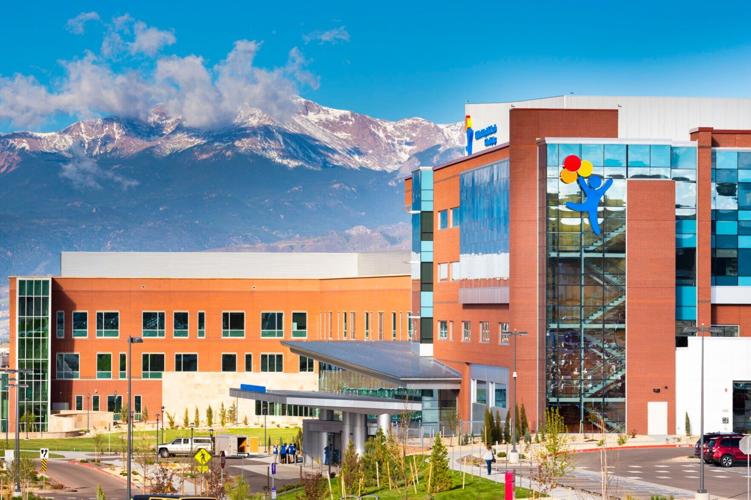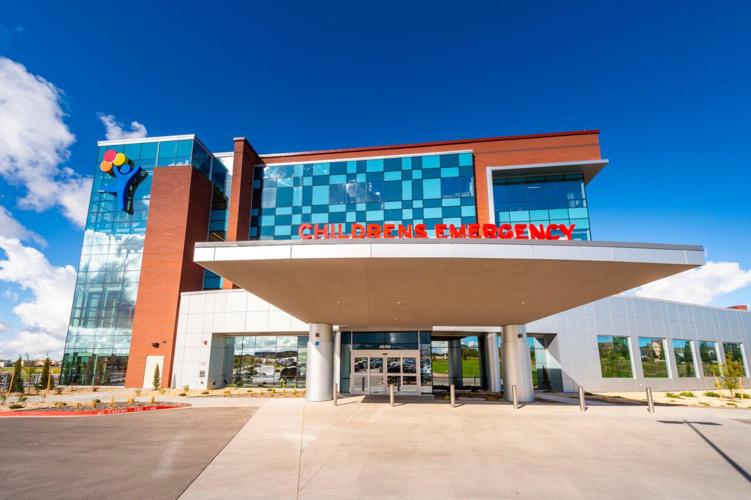Colorado children’s mental health leaders plead for pandemic recovery funding
Children’s mental health advocates want a fair share of Colorado’s federal pandemic recovery money that has yet to be allocated, they announced Tuesday during a virtual discussion spearheaded by Children’s Hospital Colorado.
“There is a continued sense of being overwhelmed as a system, and it’s palpable,” said Dr. David Brumbaugh, chief medical officer of Children’s Hospital Colorado, which operates four pediatric hospitals, including one in Colorado Springs.
The group is calling for $150 million of the $450 million remaining from what Gov. Jared Polis earmarked for all behavioral health care from the White House’s American Rescue Plan Act to be spent on prevention, treatment and recovery programs for children and teens.
The dollar amount constitutes one-third of the total and was chosen because children and young adults under age 24 constitute about one-third of the state’s population, said Dr. Jenna Glover, a child and adolescent clinical psychologist and psychology training director for the Pediatric Mental Health Institute at Children’s Hospital Colorado.
Children’s Hospital Colorado declares state of emergency for pediatric mental health
The request has a lot of competition.
Members of a Behavioral Health Transformational Task Force and a subpanel are reviewing 48 different proposals that add up to more than the $450 million pot, Vincent Atchity, president and CEO of Mental Health Colorado and the neutral chair of the subpanel, said in an interview.
“The money is for behavioral health systems transformation, in association with recovery from the pandemic,” he said, “and the subpanel and task force are going to be weighing a lot of needs in order to come up with final recommendations.”
Members will finalize recommendations for how the funds should be divided in the first few weeks of January and submit a report to the state legislature and governor in mid-January, he said.
Lawmakers are expected to propose expenditure bills soon after the 2022 session opens on Jan. 12, Atchity said.
“We’re in such a crisis environment in our state,” he said, mentioning not only children’s mental health demands, but also nearly 350 pretrial criminal defendants waiting in jails for a court-ordered spot to open at the state-run mental hospital, and homeless people in dire need of residential substance use treatment.
“This $450 million, while truly a wonderful opportunity to make a big impression, is not going to solve every problem we’ve got,” Atchity said. “The group will be as strategic and judicious as possible in making these recommendations.”
A state of emergency that Children’s Hospital Colorado issued in May, when escalating demand for youth mental health services reached a point of alarm in delivering treatment, has not improved, system leaders during Tuesday’s discussion.
“Six months later, the crisis continues,” Brumbaugh said.
Indicators he cited included: the need for mental health services surging 73% over the past two years, suicide ideation being the leading behavioral health complaint in emergency departments systemwide in September, and up to 50 kids on any given day seeking hospital care for an acute mental problem.
Advocates outlined policy and funding action steps to help address the pandemic’s negative effects on children’s well-being in a document they released Tuesday, the “Children and Youth Mental Health Playbook.”
“It offers the opportunity for lawmakers to act and take responsibility for failures of the current system and take steps to rebuild,” Glover said. “The goal is to reach children before they need intense, high levels of care.”
Increased incidents of anxiety, depression, suicide ideation and other mental anguish speak to the need, they said, and statistics show less than a quarter — or 22% — of children with severe mental impairment are receiving mental health care.
Among the ideas for spending the $150 million on pediatric mental health are in-home crisis response services, adding more residential treatment for patients who leave the hospital but are not well enough to return home, enhancing telehealth consultation, creating respite programs for caregivers, building a better continuum system and filling the workforce shortage.
As a victim advocate, college freshman Ashley O’Day said during the virtual discussion that she sees the effects of untreated youth mental health issues every day.
“When it’s not nipped in the bud in early childhood, it does have long-term consequences,” she said.
“It’s not something to be ashamed of; refusing to air your dirty laundry just makes it stink.”
The federal recovery funding is one-time dollars, Atchity said, and members of the subpanel and task force are looking at wherever possible, “make investments where there are matching funds or in-kind support — some path to sustainability,” he said.
“Not just one-and-done money out the door but that can build toward something that’s long lasting,” Atchity said.
That’s exactly what children’s mental health advocates said they want to see.
“The type of commitment for long-term sustainable change is not going to be measured in months,” said Zach Zaslow, director of government affairs for Children’s Hospital Colorado. “The types of situations are long-term plans and investments, whether building out residential treatment facilities or the workforce.”
Contact the writer: 719-476-1656.







